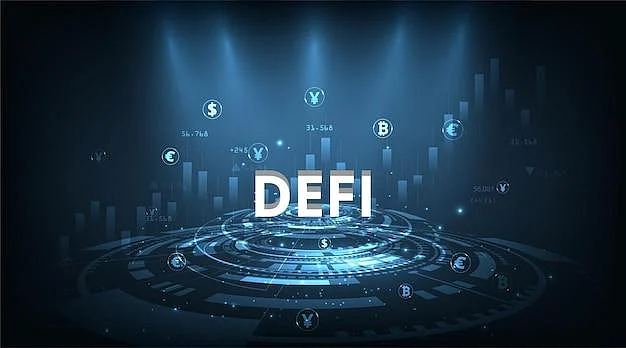The finance world is going through a revolutionary shift. The centuries-old traditional banking institutions, the guardians of financial services, have a formidable competitor now—Decentralized Finance (DeFi). DeFi has been a game-changer by offering an alternative to traditional banking in the shape of blockchain-based financial solutions. It eliminates middlemen, brings more transparency, and offers users direct control over their funds.
As this decentralized framework expands, an important question is raised: Will DeFi eliminate banks altogether, or will the two systems figure out how to coexist? Although DeFi has certain advantages, traditional banks continue to offer stability, regulatory oversight, and essential financial services. The future of finance will likely be propelled by a fusion of these two models and not a complete substitution. Let us explore how DeFi and banks might evolve over the next couple of years.
The DeFi Promise: A Decentralized Alternative
DeFi breaks with the conventional centralized financial systems. Founded on blockchain technology, it enables individuals to utilize financial services—borrowing, lending, trading, and earning interest—without intermediaries like banks. Smart contracts, or computer-coded self-executing contracts, replace trust-based institutions, reducing fees and improving efficiency.
One of the most attractive aspects of DeFi is that it is open. Traditional banking offerings can include credit checks, personal identification, and residency proof, shutting out millions of unbanked and underbanked people worldwide. DeFi, on the other hand, encourages anyone with an internet connection and a digital wallet to participate, spreading financial inclusion to a previously unimaginable scale.
Besides, DeFi eliminates lengthy approval procedures and banking hours. They are executed in real-time, an efficiency the banks cannot match. High financial rewards offered by yield farming, staking, and lending protocols based on decentralization attract clients seeking more from traditional banking systems.
The Strength of Traditional Banks: Stability and Security
Despite all the advantages of DeFi, there is still a place for banks in the global economy. Banks offer stability, shielding from regulators, and a stable framework that has been developed over the centuries. Banks are insured, regulated, and monitored by money authorities, which gives some degree of trust and stability that DeFi cannot offer at this time.
For the majority of individuals and businesses, banks remain the default option since they can handle big transactions, offer customer support, and offer recourse in case of a dispute or fraud. DeFi, as groundbreaking as it is, remains in its infancy and has been marred by security breaches, smart contract bugs, and rug pulls—where developers abandon projects and take user money with them. The lack of regulatory oversight means that victims of DeFi fraud often have little to no legal recourse.
Another critical factor is compliance with Anti-Money Laundering (AML) and Know Your Customer (KYC) regulations. Governments and financial institutions have implemented these measures to prevent illicit activities such as money laundering and terrorism financing. DeFi라이브 바카라 pseudonymous nature makes regulatory compliance difficult, raising concerns among authorities about its potential misuse.
The Future in All Likelihood: Coexistence, Not Supplanting
While DeFi revolutionizes the traditional financial system, its takeover won't be complete. Instead, the financial system will most likely evolve towards a hybrid system where both exist side by side and complement each other. Banks already explore blockchain technology, and some institutions include digital assets and decentralized solutions in their services.
A possible vision is regulated DeFi, wherein decentralized platforms come under a system that is compliant with regulation but does not lose the benefits of decentralization. It would then allow users to preserve the security and legal assurances of conventional banking without losing access to the new financial solutions that DeFi promises.
Central banks around the world are also experimenting with Central Bank Digital Currencies (CBDCs)—digital equivalents of state currencies that are issued and regulated by governments. CBDCs could occupy the middle ground between traditional finance and decentralized systems by offering a safe and government-backed digital currency that can seamlessly engage with DeFi ecosystems.
Moreover, traditional banks can incorporate DeFi-drawn products such as tokenized assets, lending protocols, and smart contract-based financial instruments. Banks can improve efficiency, reduce operational costs, and offer competing services equivalent to DeFi players using blockchain technology.
Challenges and Considerations
In order to bring DeFi to widespread use and longevity, there are several challenges to be addressed:
Regulatory Clarity: Governments and regulators are yet to decipher how to regulate DeFi without stifling innovation. Balancing decentralization and compliance will be the key to its future.
Security and Smart Contract Risks: With the growth of DeFi, developers will have to focus on enhancing security controls to prevent hacks, vulnerabilities, and scams.
User Experience: Traditional banking products have user interfaces and customer support, whereas DeFi platforms are at times challenging to use for newcomers. User experience streamlining will be critical in order to widen the user base.
Interoperability: The ability of DeFi platforms to interact with traditional money systems will be the determiner of the extent to which they can coexist.
Conclusion
The rise of DeFi is a paradigm shift in finance that poses a threat to traditional banking through decentralized and inclusive financial products. Rather than replacing banks, however, DeFi will likely coexist and augment existing financial institutions.
The future of finance is not DeFi or banking in the traditional sense, but both blended together. Blockchain-based innovations will be embraced by banks, and DeFi projects will coalesce around regulatory and security needs. This hybrid financial system may offer the best of all worlds—efficiency and creativity from DeFi, with stability and dependability from conventional banks.
As DeFi matures, its footprint on the realm of finance shall be undeniable. Either through competition, innovation, or collaboration, the finance of the future shall be governed by the changing tide of decentralized and traditional financial networks. The sole question now isn't whether or not DeFi will replace banks, but rather how they will learn to thrive together in an increasingly digital world














